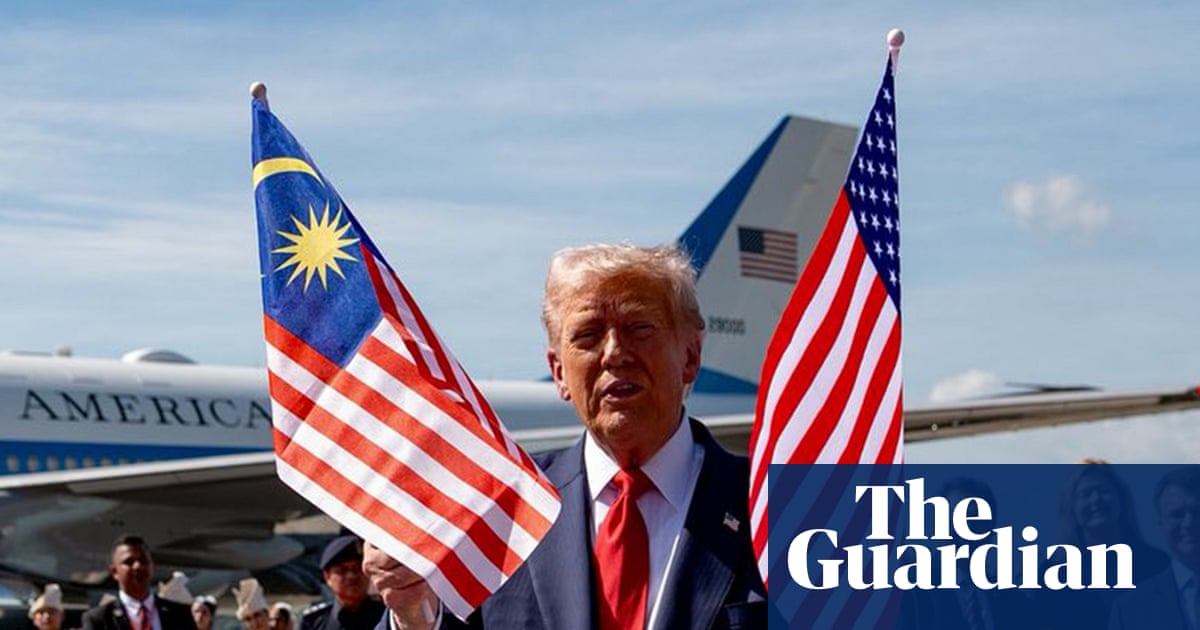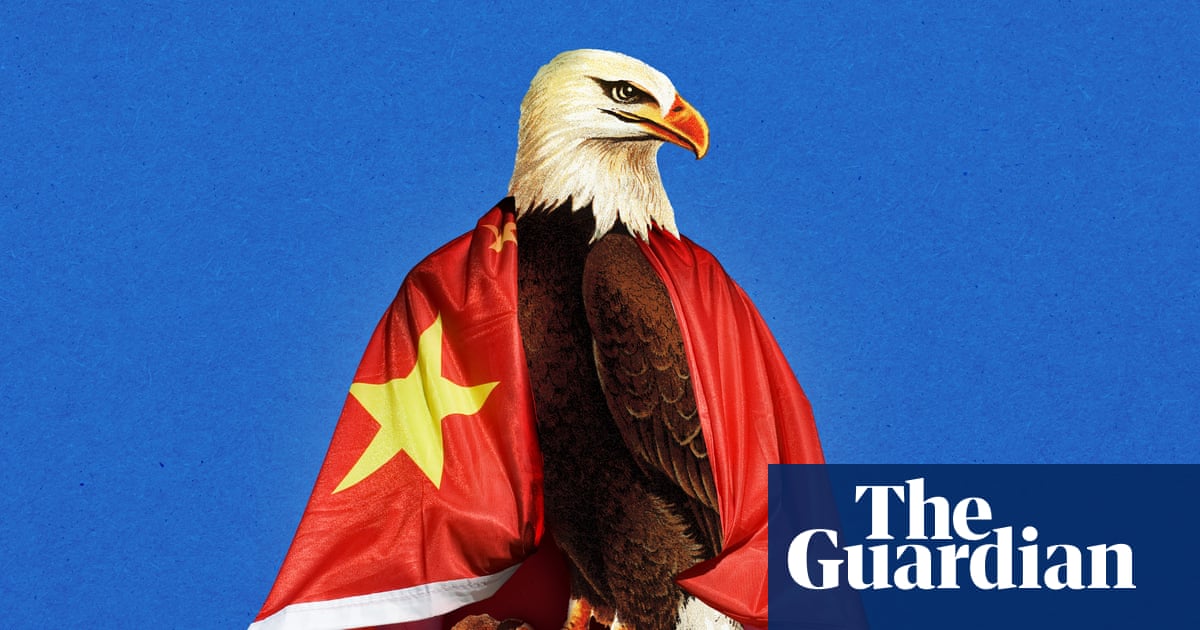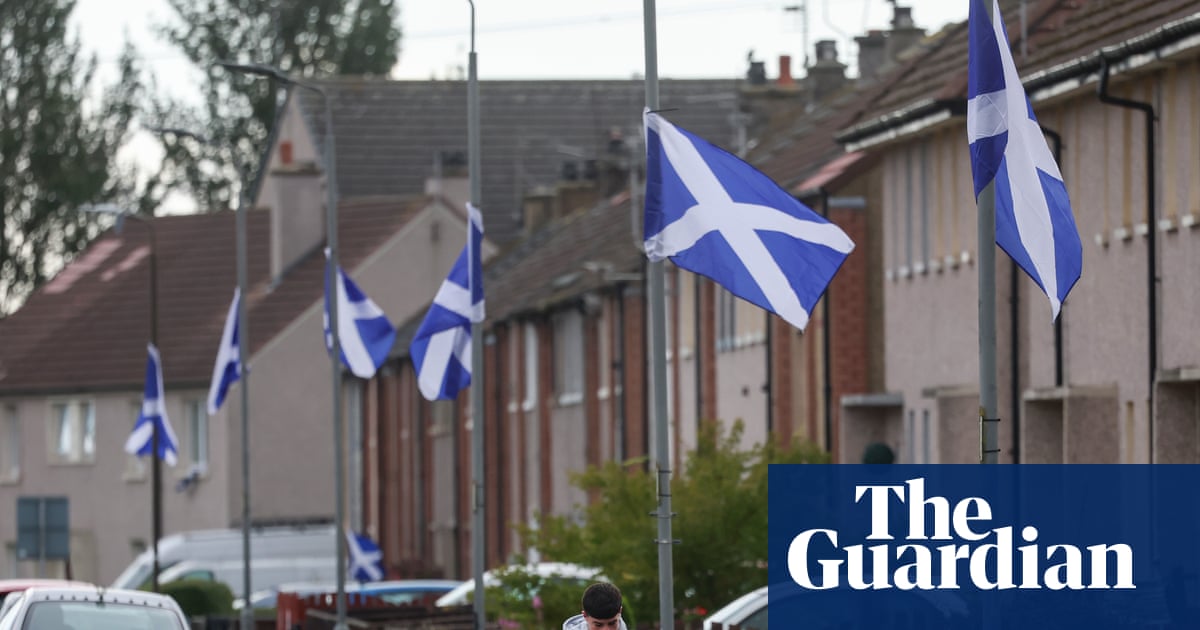Donald Trump’s trade policy has been labelled “Taco” – “Trump always chickens out” – by his critics. But when it comes to his latest trade war with the EU, it’s Brussels that risks chickening out. The US and the EU have been negotiating for months on an agreement. This week Trump made the shock announcement that the US would hit the EU with punitive tariffs on goods at a crippling 30% rate from 1 August. This was in addition to separate steel and aluminium tariffs, and cars at even more punitive rates.
Blindsided Brussels negotiators calculated the economic damage, and ministers talked about retaliation. Ursula von der Leyen, the European Commission president, warned that “all necessary steps to safeguard EU interests” would be taken. But so far, despite the tough words, the EU is holding back.
The hope of finding a reasonable compromise, which is the German chancellor Friedrich Merz’s preoccupation, makes economic sense. But the political fallout of the EU’s reticence and perceived weakness could be immense.
The original Brussels strategy in talks with the US was to aim for a “0% for 0%” tariff agreement. It argued that the overall transatlantic trade balance should be considered, including services as well as manufactured goods. Because, although (as Trump complains bitterly) the EU enjoys a significant trade surplus in goods with the US – to the order of €200bn a year – it consistently features a deficit in services, in particular tech services, standing at about €150bn a year.
When the UK reached an early “framework deal” with the US, accepting a 10% US tariff on its exports, but leaving negotiations open for exemptions on a number of specific sectors, it was considered dismissively, in EU circles, a bad deal.
A 10% tariff is, after all, pretty high. Keir Starmer shaking hands on that appeared to be sealing the end of the free-trade era. The assumption was that given the EU’s economic size and the dependence on the European markets for certain US exports, Harley-Davidson bikes for example, Brussels had the clout to do a lot better: to induce Washington into a more trade-friendly deal.
Indeed, China, whose economic weight is comparable to the EU’s and much higher than that of the UK, used its leverage to secure a trade truce, which is as much, if not more, in Beijing’s interest than Washington’s. Washington and Beijing are now working towards a summit in the autumn.
With Europe, negotiations have not turned out so well. As the Trump administration resumed sabre-rattling again recently, threatening Mexico, Canada and Brazil, the volatility made the EU jittery, eager to seal a deal no matter what. Back in the spring, on Trump’s so-called “liberation day”, the EU had been firm in threatening substantial retaliation, including venting the possibility of its “nuclear” option, a trade anti-coercion instrument that would severely restrict US access to the EU internal market. All of that was put on hold after the White House blinked first, dialling down from its original 20% tariff threat to a baseline of 10%, alongside higher sectoral tariffs.
The prevailing view among EU member states then was that rather than follow Trump down the rat hole of a tit-for-tat trade war, they should negotiate an overarching free-trade deal. In the background, European governments also feared that Trump would leverage their military defence dependency on the US by lashing out, especially against Ukraine, at the Nato summit in The Hague.
The Hague summit came and went in June. No agreement on trade materialised, but talks were ongoing. Then Trump launched his latest bombshell, throwing agriculture and pharmaceuticals into the mix as well.
But once again, the EU has taco-ed out. A package of potential counter-tariffs drawn up to hit US exports worth €21bn annually has been delayed. The European Commission is working on an additional retaliatory list, including US goods such as aircraft, alcohol and food, originally amounting to a value of €95bn. But this has been cut to €72bn, and may never come into effect. Talk about implementing the anti-coercion instrument is shelved for now. In the meantime, the US is applying tariffs on about €380bn of annual imports from the EU.
As with all sanctions, retaliatory tariffs would be self-harming. It makes economic sense to focus instead on doubling down on removing trade barriers with other countries. In this respect, the European Commission has been active. Alongside free-trade agreements with four of the Mercosur group (Argentina, Brazil, Paraguay and Uruguay) and Mexico, which were reached before Trump took office, the EU has stepped up the pace in talks with Australia, New Zealand and India, and has launched negotiations with the UAE. After many years, it has just reached a deal with Indonesia. It has also proposed to the Comprehensive and Progressive Agreement for Trans-Pacific Partnership, featuring 11 Asia-Pacific countries plus the UK, to deepen relations and explore the possibility of developing a new World Trade Organization, given the original has been blocked by the US for many years.
after newsletter promotion
But it is one thing to make speeches and even sign trade agreements, quite another to implement them. To cite the most obvious sore point, ratification of the free trade deal with the Mercosur bloc remains stuck. Nonetheless, there is real momentum behind the EU’s trade policy both with countries in the “rest of the west” and with the “rest” in the global south.
But none of this alters the reality that succumbing to Trump’s bullying on trade may be a political boomerang for Europe. Although trade is managed by the EU collectively, not by individual governments, policy decisions still require approval by a qualified majority of member states. And it is no secret that European countries are divided between doves and hawks.
The doves are prevailing so far. These include rightwing, nationalist, Trump-friendly countries such as Giorgia Meloni’s Italy, countries such as Germany that are heavily exposed to trade with the US, and northern and eastern member states that fear Trump’s wrath on defence. Put together, they constitute a solid majority. So solid that if the US were to carry on bullying, the EU may continue bending to breaking point, perhaps going as far as loosening its digital regulations, which is arguably the real prize Trump is after. This genuflection to Washington would amount to a significant unravelling of European integration. And although rightwing EU governments share responsibility for the appeasement adopted so far, they would also capitalise politically on a bad deal, blaming “Brussels bureaucrats” for the damage.
If, for instance, the EU ends up agreeing to a 15% or 20% US tariff base, plus higher sectoral tariffs – in other words a worse deal than the UK’s – it will be hard to argue that European unity has been a source of strength. Europe’s tilt towards nationalism and the far right is weakening the continent. As it does, it’s strengthening those far-right forces undermining Europe’s interest.
-
Nathalie Tocci is a Guardian Europe columnist

 3 months ago
76
3 months ago
76

















































